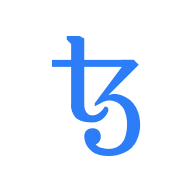
Self-amending blockchain
XTZ price live chart

Download Tezos wallet app
Store & Transfer XTZ safely
Monitor your XTZ balance in USD
Receive XTZ in BNB network
Send Tezos by mobile phone number with 0% fee
XTZ wallet mobile app for iOS and Android
Tezos basics
Tez
Infrastructure
Tezos is a multi-purpose blockchain which aims to combine a self-amending protocol and on-chain governance to manage future changes and implementations to the network. It supports the creation of new tokens and smart contracts (thus decentralized applications or dApps). The on-chain governance system enables token holders to make decisions together and improve the network over time, as opposed to the less-inclusive off-chain governance models used by Bitcoin and Ethereum.
Tezos token type
XTZ
Native
Vote
As with other blockchain platforms, Tezos users can use its native token, XTZ, to pay for transaction fees and smart contract execution. But this is not a meaningful source of income for Tezos validators (aka bakers), and transaction fees are often written off as negligible.
Instead, XTZ plays a central role in Tezos' consensus mechanism and on-chain governance system. Users can stake XTZ tokens directly on the network to participate in the validation of transactions and blocks. All tokens staked to the platform receive a reward in the form of newly distributed XTZ tokens in proportion to the number of tokens staked.
Staking also gives the user pro-rata voting rights within Tezos, enabling stakers to help determine the future direction of the protocol. XTZ holders without the resources and technical ability to stake directly can delegate their voting power to other bakers. This model lets any token holder participate in Tezos' on-chain governance system.
Tezos history and first price
Crowdsale
Tezos conducted an ICO from June 28, 2017 to July 13, 2017, in which 65,681 BTC and 361,122 ETH were raised. A total of 763,306,929.68 XTZ were issued at launch and allocated as follows:
- 79.59% was allocated to ICO participants
- 0.41% was allocated to Early Backers and contractors
- 10% was allocated to the Tezos Foundation
- 10% was allocated to Dynamic Ledger Solutions (DLS)
The XTZ allocated to the Foundation and DLS are subject to a 4-year vesting schedule with monthly cliffs. The Foundation has half of its XTZ in a vesting smart contract and another half is reserved for DLS when certain milestones are met. When those milestones are met those tokens will be moved into a vesting smart contract for DLS. Until that time the Foundation will use some of these reserved tokens internally as part of the deposit needed for baking.
Tezos founded and on-chain governance design Arthur Breitman first proposed Tezos in a position paper released in Aug. 2014. He later released a white paper in Sept. 2014 that detailed more specifics about the project. Breitman published both articles under the pseudonym "L. M Goodman" akin to Bitcoin's anonymous founder, Satoshi Nakamoto. In the documents, the author stressed Bitcoin's design failed to account for a more inclusive governance process and did not facilitate the creation of new tokens. Breitman and his wife Kathleen, therefore, designed Tezos as a token issuance and smart contract platform with an on-chain governance model, which would allow XTZ holders to vote on proposed protocol upgrades to avoid forking the network.
In 2015, the Breitmans established a company called Dynamic Ledger Solutions (DLS), which was responsible for writing the initial code for Tezos. At its core, Tezos is a system designed to formalize proposing, voting for, and implementing changes to the functionality of the network. Once a proposal is submitted, holders of Tezos (XTZ) tokens can vote with a weighting of one vote per token. DLS released the source code in 2016 and used the codebase to launch an alphanet of the Tezos protocol in Feb. 2017, a few months before the Tezos token sale.
Tezos initial coin offering (ICO) and Foundation troubles The Tezos initial coin offering (ICO) launched on July 1, 2017, and the two-week sale managed to raise ~$232 million in Bitcoin ($BTC) and Ethereum ($ETH), exceeding the project's target of $20 million. It was the largest ICO at the time, surpassed by Filecoin's ($FIL) ~$257 million token sale a few months later. The newly established Tezos Foundation, led by appointed president Johann Gevers, assumed control of the funds as well as the responsibility to deliver the sold tezzies to ICO contributors. The foundation, which did not include the Breitmans as board members for legal reasons, intended to use a portion of the funds to purchase Dynamic Ledger Solutions (DLS) from the Breitmans, a move that would transfer control of the Tezos codebase to the foundation.
Before the sale of DLS could take place, an internal dispute arose between the Breitmans and Gevers, leading to a delay in the distribution of XTZ tokens to investors. In response, angry investors launched several class-action lawsuits targeting Tezos and DLT, adding further delays to the protocol's development and token issuance event. The internal dispute ran its course by mid-Feb. 2018, when Gevers and another involved foundation member left their positions.
Mainnet launch The foundation's early troubles caused the development team to miss its initial 2017 launch date. After the resolution, protocol development resumed, enabling the Tezos Foundation to release a betanet in June 2018. Once it completed a testing period on the betanet, the foundation launched the Tezos mainnet in Sept. 2018.
The launch introduced a new version of a Proof-of-Stake (DPoS) consensus model. Token holders can participate in consensus by locking up their tokens in exchange for the ability to validate blocks. The industry commonly refers to this process as staking, but the Tezos community uses the synonymous term "baking." The Tezos design expands on traditional PoS systems by enabling users to "delegate" tokens to bakers without transferring ownership. In this self-described "liquid" PoS model, a baker receives a block reward in the form of new XTZ tokens with a proportional amount of this reward distributed to users that delegated tokens to the baker. This system enables smaller token holders to participate in the validation (and reward) process if they hold less than the required amount to become a full baker.
The Tezos genesis block is proposed
Public baking starts at Cycle 7 with 40 bakers and nearly 20,000 rolls
The main Tezos protocol launches, keeping all of the betanet transactions and balances intact
Athens was an upgrade proposal created by developer group Nomic Labs. The research outfit submitted two competing proposals in the submission stage: Athens A, which increased the gas limit and lowered the roll size to 8,000 XTZ, and Athens B, which also increased the gas limit but left the roll size at 10,000 XTZ. During the Proposal stage, the Athens A proposal received 70% of the submitted votes. As a result, Athens A moved on to the Exploration phase while Athens B was rejected.
In the final promotion stage, almost 100% of Tezos governance participants voted in favor of implementing Athens A. Over 84% of eligible tokens participated in the vote. The upgrade a href=" ://messari.io/article/tezos-is-about-to-enact-its-first-ever-on-chain-blockchain-update"went live/a shortly after the vote ended on May 29, 2019.
Tezos’ a href=" "on-chain governance/a system voted in favor of the a href=" "Babylon 2.0.1/a proposal, which was automatically activated when the voting period concluded on Oct. 18, 2019. The new upgrade introduced a more robust version of the blockchain’s consensus algorithm (Emmy+), simplified smart contract development, and refined the delegation process. The Babylon vote also marked a new all-time high in participation in votes submitted (59,967).
Tezos holders a href=" "voted overwhelmingly in favor/a of implementing the Carthage 2.0 upgrade. The Carthage proposal was a joint effort by crypto research outfits Nomadic Labs and Cryptium Labs to help add some code optimizations and fix a few "small issues." In particular, the upgrade will increase the gas limit for each block and operation by 30%, which allows developers to run more complex applications. Carthage also aims to improve the accuracy and security of calculating baking rewards (especially concerning endorsement rewards). On the security front, the more robust design could hinder selfish-mining like attacks from non-cooperative bakers, which a former Harvard researcher previously revealed as a possible attack vector on Tezos.
Tezos technology explained
Tezos is a multi-purpose blockchain platform that integrates features like smart contracts, on-chain governance, and the ability to conduct formal verification. The developers made a unique choice to use OCaml as the programming language arguing that it offers better security features and is a more powerful interface compared to other options like C++. OCaml also allows developers to check operations using formal verification which can detect potential bugs or errors in the code.
To allow for future changes to the network Tezos is divided into network, transaction, and consensus protocols. The transaction and consensus protocols operate separately and plug into a generic network shell. This shell maintains the current state of the blockchain and allows the network to conduct internal checks on the protocols allowing them to validate their own replacements. Proposed changes can be made by anyone and are decided on by a vote from token holders. Proposals can include a payment to be made by the developer proposing a change that the team believes will incentive more impactful development on the platform.
Tezos uses a variation of a Proof-of-Stake (PoS) system that differs slightly from established models in that block producers are not selected by token holders and anyone can participate as a baker (validator) if they hold a specified amount of tokens. Token holders that do not meet the minimum threshold can delegate their tokens to a baker without needing to relinquish control of their tokens. Using this model the team believes they can increase participation from token holders by reducing frictions and allowing anyone to receive newly released XTZ to maintain the relative value of their holdings.
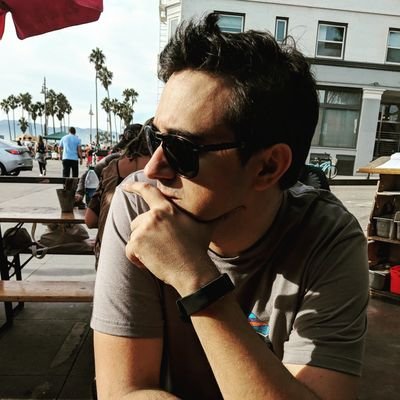

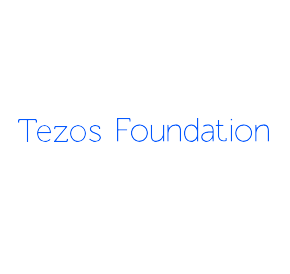
Tezos supply limit
Inflationary
Fixed Issuance
Baking is the action of signing and publishing a new block in the chain. Bakers earn a block reward of 16 XTZ for baking a block. In addition to the Baker, 32 Endorsers are randomly selected to verify the last block that was baked. Endorsement rewards can be up to 2 XTZ, if the baker with the highest priority made the endorsement. If the baker of second-highest priority makes the endorsement, the reward is set at 1 XTZ. If neither of the two highest priorities bakers make the endorsement, the reward is then set at 0 XTZ.
Block rewards are funded via newly issued coins. The annual outstanding inflation rate is set up to target a maximum of 5.51% per year. Because of the variable endorsement rewards structure, as well as the effective block generation time, the inflation can actually be lower than the maximum 5.51%.
XTZ are burned in two cases:
- When a baker is caught acting maliciously (double baking or double endorsement)
- When a KT1 account, which is the smart contract for delegation, is created)


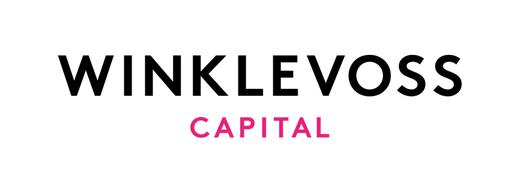

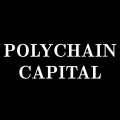
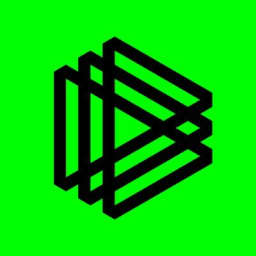













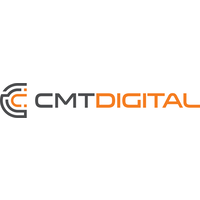



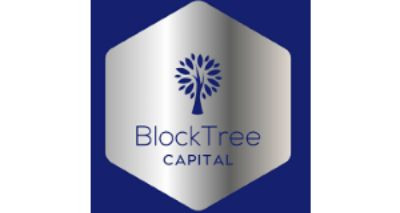
Tezos consensus
Proof-of-Stake
Liquid Proof-of-Stake
1 min
Liquid Proof-of-Stake overview In Tezos, a participant needs to have a minimum stake of 8,000 XTZ to be considered a baker. The Proof-of-Stake (PoS) consensus mechanism selects bakers as a function of their total stake to participant in signing the next block of transactions. Stakeholders that do not have enough XTZ or the technical wherewithal to set up the required infrastructure can also use delegation to participate in consensus.
Participants in the consensus algorithm are called delegates, and these contributors can assume one of two roles:
- a baker: a delegate that creates blocks
- an endorser: a delegate that contributes in agreeing on a block by endorsing that block Baking rights and endorsing rights are determined at the beginning of a cycle (i.e., a chunk of blocks) by computing a random seed from information already found on the blockchain. Bakers and endorsers receive rewards (in the form of XTZ inflation or newly minted tokens) for their contributions to incentivize consensus participation. The delegation process transcends traditional PoS models as anyone is free to participate as well as select and govern the validator of their choice to offload any infrastructure management or costs.
Implicit vs. originated accounts Originated accounts are contracts that can delegate funds to other accounts to participate in the baking process. Implicit accounts cannot delegate; instead, they can be registered as bakers and receive delegate funds (and voting power) Once registered, an implicit account can participate in baking with its own balance plus any funds delegated from originated accounts.
Tezos governance
Delegated On-Chain Vote, Direct On-Chain Vote
The Tezos Foundation manages the allocation of the funds collected during Tezos’ initial coin offering (ICO). Its intention is to use this capital to support the growth and development of the Tezos ecosystem. But the foundation does not control the future direction of the Tezos protocol. Instead, the network employs an on-chain governance system where any developer can submit changes to the codebase onto the blockchain and XTZ holders vote (either directly or through a delegate) on whether to accept or reject the proposal.
Who regulate Tezos in 2026?
The Securities Framework Asset Ratings of the Crypto Rating Council (CRC) attributed the score of 3.75 out of 5 to Tezos and provided the below summary:
- Sale of tokens or token interests prior to the existence of token utility
- Current functionality of the platform
- Decentralized development efforts
The CRC is a member-owned and operated organization whose purpose is to assess if a crypto asset, or its development, issuance, and use have characteristics that make it more or less likely to implicate federal securities laws. According to the CRC framework, a score of 5 results when an asset appears to have many characteristics that are consistent with the Howey-test factors. A score of 1 results when an asset appears to have few characteristics that are consistent with the Howey-test factors.
Store Tezos with Cropty cryptocurrency wallet by 3 simple steps:
- Download the app from the Apple AppStore or Google Play, or open your browser wallet.
- Create your Cropty wallet account with Face ID or Touch ID security options.
- Transfer XTZ from external wallet.
Receive Tezos to your Cropty wallet by QR-code, phone number, e-mail and nickname:
- Download the app from the Apple AppStore or Google Play, or open your browser wallet.
- Create your Cropty wallet account, set up a nickname.
- Click ‘Receive’ and follow the instructions.
You can transfer your Tezos holdings and store it safely with Cropty wallet. Cropty secures safety of your holdings through various verification options like using password, authenticator app, Face ID, Touch ID and backup codes. You can be sure no one can get access to you Tezos holding except you.
Start investing in Tezos with Cropty cryptocurrency wallet by 3 simple steps:
- Download the app from the Apple AppStore or Google Play, or open your browser wallet.
- Create your Cropty wallet account, set your authentication settings.
- Transfer XTZ from external wallet.
The Cropty wallet provides the most convenient application for storing and transfering Tezos. Cropty targets to become one the best crypto wallets for Android and iOS in 2026. Cropty provides convenient application and secure custodial services, built for crypto beginners, as well as for crypto-savvies.
You can receive Tezos donations instantly with Cropty wallet. Download Android or iOS app or open the web version, sign up, click ‘Receive’ and follow simple instructions. Share your address with someone who wants to donate you in crypto.
You can receive Tezos donations instantly with Cropty wallet. Download Android or iOS app or open the web version, sign up, click ‘Receive’ and follow simple instructions. Share your address with someone who wants to donate you in crypto.
You can send Tezos instantly without fee in the Cropty wallet. Download Android or iOS app or open the web version, sign up, click ‘Send’, choose ‘Send via e-mail, phone number or nickname’ and follow simple instructions.
- Sign up to Tezos wallet.
- Top up your balance with Tezos.
- Store, trade or deposit your Tezos.
- Get Tezos deposit interest directly to your Cropty wallet.







